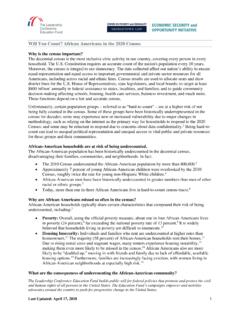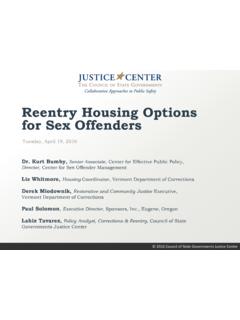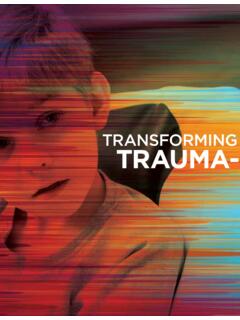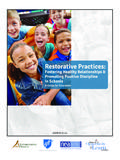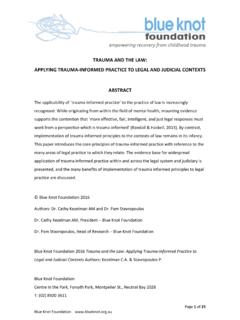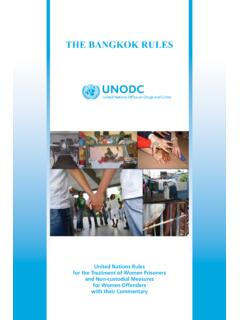Transcription of A New Paradigm for Public Safety - civilrightsdocs.info
1 Vision for Justice 2020 and Beyond: A New Paradigm for Public Safety Overview September 2019. The American criminal-legal system is a stain. on our This system replicates and reinforces patterns of racial and economic oppression that trace from slavery, including Black Codes, convict leasing, Jim Crow laws, and the War on Drugs. The result is a criminal-legal bureaucracy that denies millions of people the opportunities, legal equality, and human rights that they deserve, even as it fuels the world's highest incarceration rate. This platform envisions a new Paradigm for Public Safety that respects the humanity, dignity, and human rights of all people.
2 We propose a holistic framework that expands our view of Public Safety and prioritizes upfront investments in noncarceral programs and social services, including additional resources for education, housing, employment, health care, social-emotional supports, and other Public bene ts. We believe that this Paradigm not only furthers equity, but also constitutes e ective policy: When we stop using criminal justice policy as social policy, we make our communities safer, more prosperous, and better at ensuring opportunity. This platform o ers concrete solutions spanning every stage of the criminal-legal process, yielding a comprehensive framework for transformation.
3 We believe that this comprehensive approach is necessary: Transforming the American criminal-legal system requires dramatic decarceration and a cohesive pathway to do so, not piecemeal reforms that tinker around the margins. We created Vision for Justice: 2020 and Beyond to o er exactly this prescription. Even with this comprehensive and uni ed approach, Vision for Justice: 2020 and Beyond is only a starting point. The United States leads the world in imprisoning or supervising more than million people while ripping moms, dads, and loved ones from their families every day.
4 This bureaucracy will not vanish overnight. Even if we reduced our incarcerated population by 80 percent, we would barely reach the incarceration rate from 40 years ago. A new Paradigm for Public Safety requires not only the solutions enumerated here, but also an ongoing commitment to further reforms. 2. Our platform presents 14 planks across three themes. Before discussing these planks, though, we rst o er a set of core principles that must undergird any change pursued. All reforms must produce decarceral results and work to end racial and economic inequity. All reforms, as they shrink the criminal-legal system, must invest resources in those communities that have been most harmed by mass incarceration and mass criminalization.
5 All reforms must be rooted in human rights, restorative justice practices, and evidence-based strategies to improve the health, welfare, and Safety of communities. All reforms must involve a participatory decision-making process that empowers community members to provide greater oversight, accountability, and in uence over Public Safety priorities and activities. All reforms must be holistic: A truly meaningful overhaul requires that all planks be implemented together. This platform is a uni ed prescription, not a menu of options. All reforms must be intersectional.
6 Although this platform highlights the experiences of Black and Brown communities, we recognize that within these communities lies great diversity that compounds disparities within the criminal-legal system, including diversity based on gender, sexual orientation, gender identity, immigration status, disability, HIV status, economic status, and involvement in underground economies. Our goal is to build a system that respects the dignity, rights, and humanity of all people. 3. I. Ensure Equity and Accountability in the Criminal-Legal System PLANK Create a new Paradigm for #1 Public Safety and policing.
7 PLANK Create a new framework for #2 pretrial justice. PLANK Ensure an e ective right to #3 counsel. PLANK Decriminalize poverty. #4. PLANK Ensure accountability and #5 transparency in prosecution. II. Build a Restorative System of Justice PLANK End jails and prisons as #6 we know them in America. PLANK Deprivatize justice. #7. PLANK Dramatically reform #8 sentencing policy. PLANK Support the children #9 of incarcerated parents. PLANK Ease legal challenges to #10 address racial inequity and abolish slavery in prisons. III. Rebuild Communities PLANK Rebalance spending priorities #11 by investing in communities.
8 PLANK Reimagine reentry, #12 probation, and parole. PLANK Build a school-to-opportunity #13 pipeline. PLANK End the War on Drugs. #14. The American Federation of State, County and Municipal Employees (AFSCME) is a member in good standing of The Leadership Conference on Civil and Human Rights and represents Public Safety o cers and other Public service workers. While AFSCME agrees with many aspects of this platform, it does not support several recommendations outlined in the document. A longer statement presenting the view of AFSCME's frontline members can be found here.
9 I. Ensure Equity and Accountability in the Criminal-Legal System PLANK #1: Create a new Paradigm for Public Safety and policing. Our current criminal-legal system and policing practices rely on a criminalization model that reproduces racial inequity while widening the divide between police and the communities that they are supposed to serve. A new Paradigm for Public Safety emphasizes noncarceral interventions and programs, not jails and prisons, to keep communities safe. Dismantle and reverse all harmful policies in the Violent Crime Control and Law Enforcement Act of 1994 (the 1994 Crime Bill ) and pass a modern 21st century Public Safety bill.
10 (See Plank #11: Rebalance spending priorities by investing in communities.). Establish a federal use-of-force standard that emphasizes de-escalation and permits the use of force only when necessary. End local police and law enforcement o cers' civil immigration enforcement cooperation under 287(g) agreements. 7. Amend Section 242 of Title 18 to provide a lower mens rea standard ( , recklessness) to ensure accountability for civil rights violations that result from police misconduct. Prohibit pro ling based on actual or perceived personal characteristics, including race, ethnicity, national origin, religion, gender, gender identity, sexual orientation, age, disability, pro ciency with the English language, immigration status, and housing status, by rigorously implementing comprehensive anti-pro ling policies, creating interventions, and enacting legislation such as the End Racial and Religious Pro ling Act.


